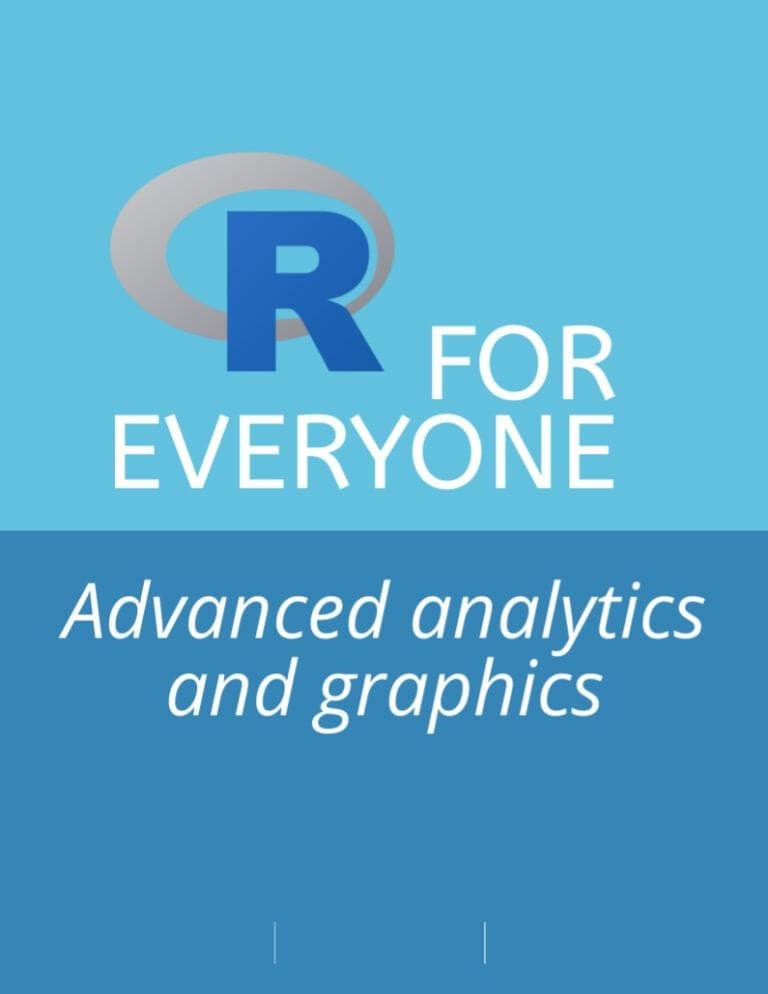R is an easy-to-use interpreted language, popular for statistical computing, handling data, and making visual presentations of results. R language is open-source with large community support. R offers a clear and structured way to work with data, supported by useful libraries and packages such as Dplyr, Ggplot2, Shiny, and Janitor.
Why Learn R?
Learning R is a good decision for anyone dealing with data because it offers strong tools for statistics and graphics. It is commonly used in both education and industry, with strong support from an active community and many available packages. R specializes in data handling, analysis, and the creation of professional reports with visuals.
Applications of the R Programming Language
R is popular in many industries because it is very good at analyzing and visualizing data. Some key applications include:
Data Analysis and Statistics: R is a popular tool for data analysis and statistics. It has built-in functions and packages that help perform complex calculations easily.
Data Visualization in R: R provides tools like ggplot2 and lattice that help in creating clear and customizable charts and graphs for presenting data effectively.
Data Cleaning and Preparation: R helps you bring in data from different sources, clean it, and prepare it so that it can be analyzed.
Machine Learning and Data Science: R makes machine learning easier through packages including caret, randomForest, and xgboost, which help in building predictive models.
Reporting and Reproducible Research: Tools such as R Markdown and knitr help create reports that update automatically and can be shared with others.
Bioinformatics and Healthcare: R is a popular tool for analyzing biological and healthcare data in genomics studies.
Finance and Insurance: R is used in finance for analyzing risks, managing portfolios, and building actuarial models.
Data Visualization in R
Data visualization is the method of displaying data through visual tools like graphs, charts, or maps. It allows you to understand big datasets and spot patterns that improve decision-making. R is designed for working with statistics and showing data visually. It is popular for creating visualizations because tools like ggplot2 and plotly allow users to design clear and customizable representations of data.
R is popular for data visualization since it gives users flexibility and control, suitable for easy or complex data analysis. This article explains how R can be used to create data visualizations and introduces some of its common tools and methods.

Download PDF: R for Everyone – Advanced Analytics and Graphics
Types of Data Visualizations
R supports several types of visualizations, for example:
1. Bar Plot Using R
Bar plots display data using bars. The bars can be arranged vertically or horizontally, and their length shows the value of the data. They are primarily used to display continuous and categorical data. The horiz parameter controls the bar plot direction: true makes it horizontal, and false makes it vertical.
Bar plots are used for the following scenarios:
• To study and compare the different types of data in the dataset.
• To study how a variable changes over months or years.
2. Histogram Using R
A histogram is similar to a bar chart, using bars of different heights to show how data is distributed. However, Data in histograms is split into continuous ranges called bins. Continuous values in a histogram are organized into bins, and you can vary the size of these bins.
The xlim option in a histogram defines the interval of values displayed. When freq = TRUE is set, a histogram presents the frequency of each value. Setting freq = FALSE shows probability densities on the y-axis, making the total area equal to one.
Example:
data(airquality)
hist(airquality$Temp, main ="La Guardia Airport's Maximum Temperature(Daily)",
xlab ="Temperature(Fahrenheit)",
xlim = c(50, 125), col ="yellow",
freq = TRUE)
Histograms are used in the following scenarios:
• To check whether the data is uniform and symmetric.
• To identify deviations from expected values.
3. Box Plot Using R
The key statistics of the data are displayed visually in a boxplot. A boxplot shows the minimum and maximum values, the median, the first and third quartiles, and the interquartile range of a dataset.
Example:
data(airquality)
boxplot(airquality$Wind, main = "Average wind speed at La Guardia Airport",
xlab = "Miles per hour", ylab = "Wind",
col = "orange", border = "brown",
horizontal = TRUE, notch = TRUE)
4. Scatter Plot Using R
A scatter plot is a chart where each point represents a data value on two axes. Every point displays the values of two parameters and allows us to identify their relationship easily.
Example:
data(airquality)
plot(airquality$Ozone, airquality$Month,
main ="Scatterplot Example",
xlab ="Ozone Concentration in parts per billion",
ylab =" Month of observation ", pch = 19)
Scatter Plots are used in the following scenarios:
• To determine if there is a relationship between two sets of data.
• To understand the strength and type of the relationship between two variables.
5. Heat Map in R
A heatmap is a type of chart that uses colors to represent numbers in a table. heatmap() function is used to plot a heatmap.
Example:
data <- matrix(rnorm(25, 0, 5), nrow = 5, ncol = 5)
colnames(data) <- paste0("col", 1:5)
rownames(data) <- paste0("row", 1:5)
heatmap(data)
Advantages of Data Visualization in R
R has the following advantages over other tools for data visualization:
• R offers a broad collection of visualization libraries along with extensive online guidance on their usage.
• R also offers data visualization in the form of 3D models and multi panel charts.
• Through R, we can easily customize our data visualization by changing axes, fonts, legends, annotations, and labels.
Disadvantages of Data Visualization in R
R also has the following disadvantages:
• R is only preferred for data visualization when done on an individual, standalone server.
• Data visualization using R is slow for large amounts of data as compared to other counterparts.
Leave a Reply